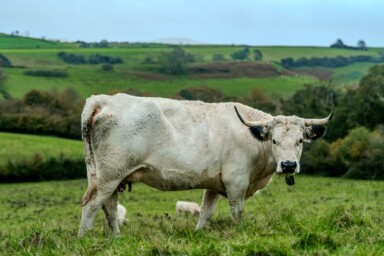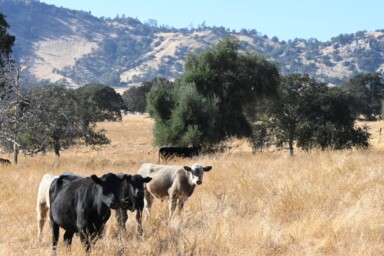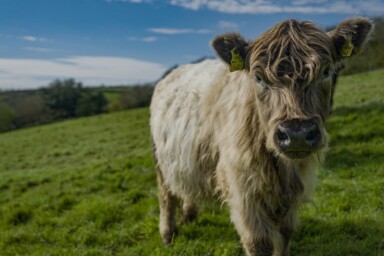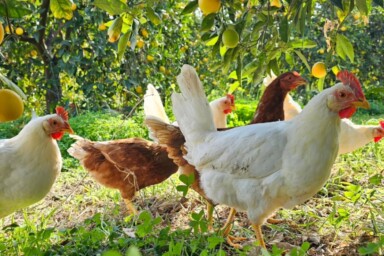Despite being widely practised for many thousands of years, silvopasture could be classed as a lost art in the UK, where we have tended towards specialised farming and larger herds and flocks. Silvopastoral agroforestry is the integration of trees with livestock. It can be achieved either by planting trees on grazing land, or by introducing stock into woodlands or orchards. Hedges can even form part of silvopasture, though arguably only truly so if they can provide proper shade, browsing plants for supplementary forage or income.
We are now starting to learn from other countries – and from an increasing body of research – the numerous benefits of silvopastoral systems. There is also an urgency that climate change brings for an uptake of these systems. Project Drawdown, a climate mitigation project, identified silvopasture as one of the top ten climate solutions.
The value of silvopasture can be broadly divided into farmer benefits and public goods, though the two are intrinsically linked, and what helps society, will often bring more profit to the farmer.
Farmer benefits
Productivity
Agroforestry systems can be more productive than monocultures. There are a number of reasons for this, but in terms of livestock, a key reason is that if animals spend less energy keeping warm, dry or cool, they can spend more energy producing milk, meat or eggs. Temperatures in the shelter of trees can be 5 degrees higher than on exposed ground. Exposure (and starvation) are a major cause of lamb deaths. Having tree shelter in extreme weather conditions at lambing can significantly reduce mortality rates. One Australian study even found a reduction of 50% in lamb mortality when there was tree shelter present, though a smaller reduction would be more likely in most circumstances.
Trees can provide browsing for livestock. Tree forage tends to have higher micronutrients and tanins than grasses, which benefit health and can reduce parasite burdens. Trees will also continue to supply food in very hot dry conditions when grass stops growing. In very wet conditions, using trees to dry out areas of high-risk land can help reduce incidence of diseases like foot rot and fluke.
The other side of this productivity coin is higher animal welfare. Whether we class animal welfare as a public good or a farmer benefit is debatable, but there is no question that in most cases increased tree cover improves animal welfare. Most of our farm animals are woodland or woodland edge creatures and are happier when there is cover present. One recent study even showed that positive human / cow interactions increased when trees were present.
Trees can also provide an income for farmers, whether as a saleable product off-farm or as a replacement for farm inputs such as bedding, mulch or firewood.
Public Goods
Soil, water and air can all be improved by planting trees.
Most obviously a growing tree will sequester carbon from the air, turning it into wood. If we can use that wood for building, or perhaps turning into biochar, then we lock up carbon for hundreds of years. But even if we use wood products more quickly, such as for tree mulch or improving soil health, this will temporarily store carbon, keeping it out of the atmosphere. The potential for soils to sequester carbon is debated but there is some hope that we can actually build soil carbon and even create topsoil more quickly in some circumstances, than was previously believed.
Water
Agroforestry can improve the quality of water that ends up in our rivers. Numerous studies have shown the potential of trees to help absorb suspended solids in water as well as nitrogen and phosphorus run-off.
Trees also help by reducing flow and, consequently, mitigating against flooding. Tree roots break up subsoils and increase the organic matter held in soils. This helps water to filter down through the soil profile and increases the potential that soils have to hold onto water.
Barriers to uptake
With all these benefits, why is silvopasture slow to catch on in the UK? We have seen a massive shift in attitude towards the practice in the last few years, but there is still a perception that trees are a problem rather than an opportunity. This is not helped by an underdeveloped farm woodland supply chain. Most timber in the UK is produced as part of larger forestry plantings and is sold onto operators that do not want to deal with smaller quantities from farmers.
This negative perception has been a particular barrier on rented land where tenants that might be keen to shift to a diverse agroforestry system are prevented by their landlords. Innovative work at Dartington Estate in Devon on new tenancy models could help resolve some of these issues. One example enables the main farm tenant to sublet rows within the farm to other growers for tree crops. They are also exploring how to recognise the changing value of trees as they mature within the lease agreement, sharing the risk and reward of the planting between the landlord and tenant.
Cost is, of course, an issue and the current uncertainty around support for environmental farming is not helping. Farmers are thinking: “Should I plant now or wait till there are grants?”
Finally, there is a skills and knowledge gap – with farm specialisation comes skill specialisation. You may be an expert dairy farmer but know nothing about how to grow successful tree crops. There are opportunities here for new entrants with no land. They can manage tree enterprises on farms, leaving farmers free to concentrate on their farming.
This is an exciting time for agroforestry in the UK; as well as the huge resources held by the Farm Woodland Forum, there is also the recently published Agroforestry Handbook which can be downloaded from the Soil Association website.
The Soil Association are also starting some agroforestry farmer learning networks as part of the FAB farmers projects.







